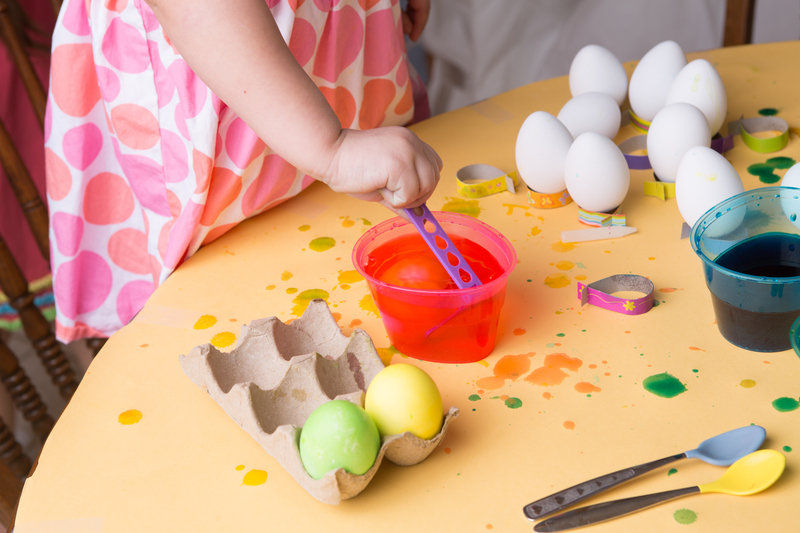Removing Tough Stains: A How-To Guide
Posted on 18/10/2025
Stains can be the bane of our existence, disrupting the aesthetic of clothing, upholstery, and various surfaces around our homes. While some stains come out effortlessly with a quick wash, others require a more strategic approach. This comprehensive guide aims to arm you with the knowledge necessary to tackle even the most stubborn stains. Here's everything you need to know.
Understanding Different Types of Stains
Not all stains are created equal; the type of stain often determines the removal approach. Here's a breakdown of common types of stains:
- Organic Stains: These include food, beverages, and bodily fluids (like blood and sweat). They generally consist of carbon-based compounds.
- Inorganic Stains: These are usually mineral-based and include rust and hard water stains.
- Oil-Based Stains: Greases, lotions, and makeup typically fall into this category.
- Dye Stains: These originate from items like ink, wine, and certain foods that carry strong pigments.

General Tips for Stain Removal
Before diving into specific stain types, here are some universal tips:
- Act Quickly: The sooner you treat the stain, the easier it will be to remove.
- Blot, Don't Rub: Rubbing can push the stain deeper into the fabric. Instead, use a blotting motion.
- Avoid Heat: Heat can set a stain, making it more difficult to remove. Use cold water initially.
- Test on a Small Area: Before applying any cleaning solution, test it on an inconspicuous area to ensure it doesn't damage the material.
Tackling Organic Stains
Organic stains are usually the most straightforward to remove. Here's how to deal with some common ones:
Food and Beverage Stains
For food and beverage stains like coffee, tea, and sauces:
- Blot the area with a paper towel to absorb excess liquid.
- Apply a few drops of dish soap mixed with water to the stain.
- Gently rub the area and then rinse with cold water.
- If the stain persists, use a mixture of vinegar and water.
Blood Stains
Blood stains can be particularly stubborn:
- Dampen the stain with cold water.
- Apply hydrogen peroxide directly to the stain.
- Let it sit for a few minutes, then blot it away with a clean cloth.
- Wash the item as usual.
Dealing with Inorganic Stains
Inorganic stains like rust and hard water can be tricky, but they are not insurmountable.
Rust Stains
Rust stains generally require specialized treatment:
- Apply lemon juice directly onto the rust stain.
- Sprinkle salt on top and let it sit in the sun for a few hours.
- Rinse with cold water and repeat if necessary.
Hard Water Stains
Hard water stains are common on glass and ceramic surfaces:
- Spray the area with a mixture of vinegar and water.
- Let it sit for a few minutes.
- Scrub with a soft brush or cloth, then rinse with cold water.
Addressing Oil-Based Stains
Oil-based stains might seem daunting, but with the right technique, you can conquer them.
Grease Stains
Grease stains are common in the kitchen:
- Sprinkle baking soda or cornstarch directly onto the grease stain.
- Let it sit for 15-20 minutes to absorb the oil.
- Brush away the powder and apply a few drops of dish soap.
- Rinse with warm water and launder as usual.
Makeup Stains
Lipstick and foundation are tough due to their oil content:
- Blot away any excess makeup.
- Apply a makeup remover or rubbing alcohol to the stain.
- Blot (do not rub) the area and then rinse with cold water.
- Wash the fabric as usual.
Combating Dye Stains
Dye stains, such as those from wine and ink, can be significantly challenging but not impossible to remove.
Wine Stains
Red wine is infamous for ruining fabrics:
- Blot up as much wine as possible with a clean cloth.
- Apply white wine (if available) to neutralize the red wine's pigment.
- Sprinkle baking soda over the stain and let it sit for 15 minutes.
- Rinse with cold water and launder as usual.
Ink Stains
Ink stains can be particularly vexing and might require multiple attempts to fully remove:
- Blot up as much ink as possible with a clean cloth.
- Apply rubbing alcohol or a commercial ink remover to the stain.
- Blot the area with a clean cloth and rinse with cold water.
- Repeat the process until the stain is gone.
Stain Removal for Different Fabrics
Different fabrics react differently to various stain removal methods:
- Cotton: Generally durable and can handle most stain removal methods, but always test first.
- Silk: Very delicate and should only be treated with mild solutions. Professional cleaning is often recommended.
- Wool: Can shrink or become felted if treated improperly. Use cold water and mild detergents.
- Synthetic Fabrics: Usually more resilient but can sometimes hold onto stains more stubbornly. Use stain removers designed for synthetic fabrics.
Eco-Friendly Stain Removal Solutions
For those looking to minimize their environmental footprint, there are several eco-friendly stain removal options:
- White Vinegar: Effective for a wide range of stains and is biodegradable.
- Baking Soda: Great at absorbing stains and odors without harming the environment.
- Lemon Juice: Natural and effective, especially for removing rust stains.
- Hydrogen Peroxide: Works well on organic stains and is safer for the environment than many commercial cleaners.

Commercial Stain Removers
When natural methods fail, commercial stain removers can come to the rescue. Here's a list of popular and effective products:
- OxiClean: Versatile for various types of stains and fabrics.
- Shout Advanced Stain Remover: Effective on set-in stains.
- Zout Stain Remover: Particularly good for protein-based stains such as blood and sweat.
- Folex Carpet Spot Remover: Especially useful for carpet and upholstery stains.
Conclusion
Stains don't have to be a permanent blemish on your belongings. By understanding the type of stain you're dealing with and employing the right methods for removal, you can save your favorite clothes, upholstery, or carpet from ruin. Whether you choose natural solutions or rely on commercial products, the key is to act quickly and test any solution on an inconspicuous area first. Happy cleaning!







